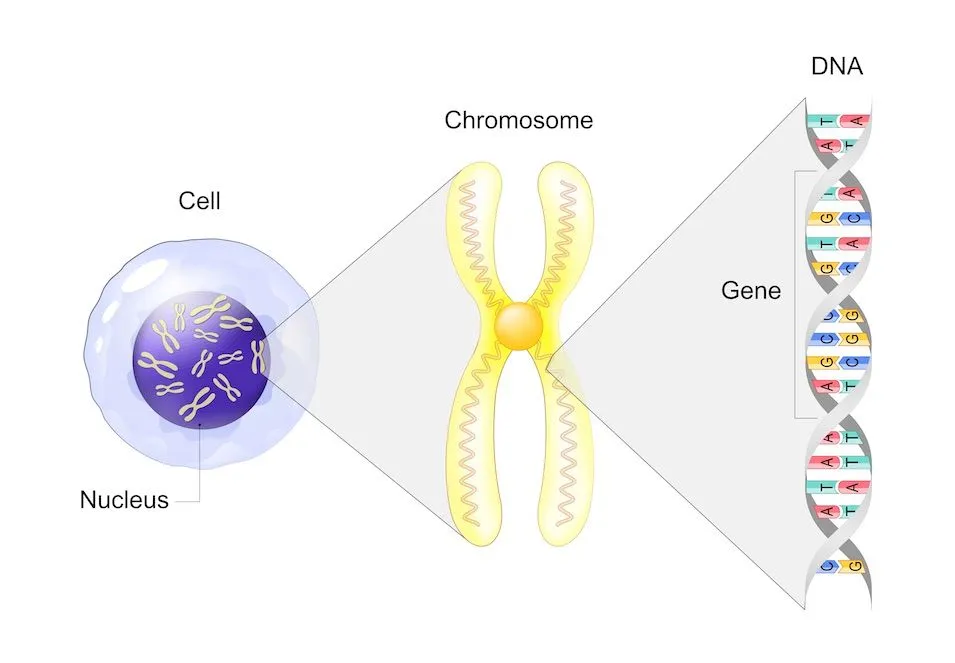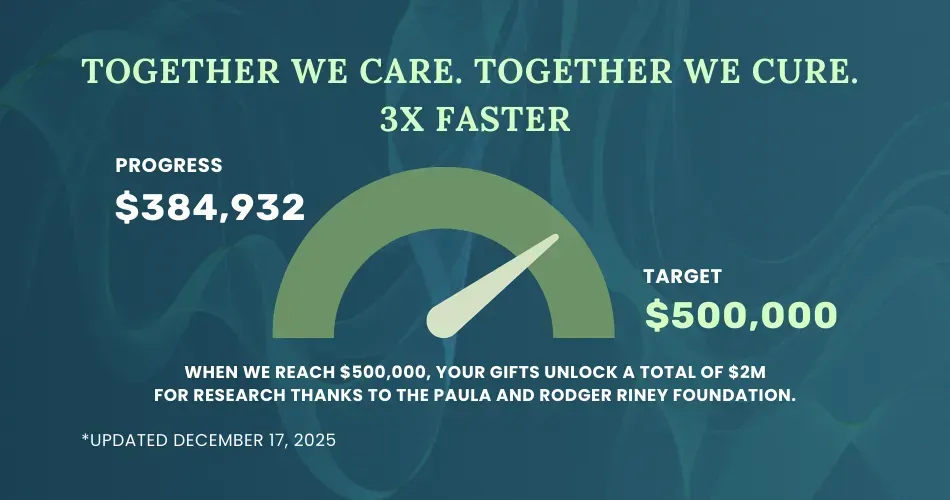How is Follicular Lymphoma Diagnosed?
What tests can you expect to receive as a person with follicular lymphoma? How do these tests diagnose the disease? Learn the answers to these questions below!
How is Follicular Lymphoma Found?
Follicular lymphoma is a type of cancer that affects follicular center B-cells. These B-cells are normally located in the lymphatic system, a network of lymph nodes and the spleen. If the disease has progressed, the cancer cells may also be present in the blood or bone marrow.
A PET/CT scan is part of the diagnosis and management of follicular lymphoma. Doctors try to limit the frequent use of a PET/CT scan to help reduce a person’s exposure to radiation. However, the test provides helpful insight into the location and size of cancer cells which determines the stage of the disease and guides treatment decisions.
The test combines two types of scans. The PET scan uses a small amount of a radioactive drug called a tracer to light up areas of the body with a high cellular metabolism, like follicular lymphoma cells. The CT scan uses X-rays to take slice-like pictures of the inside of the body, showing abnormal findings like enlarged lymph nodes.
How is Follicular Lymphoma Diagnosed?
Gathering the sample with a lymph node biopsy:
Once enlarged lymph nodes are found from the PET/CT scan, a sample is collected through a lymph node biopsy, which can be done through a needle procedure or a small surgery.
Once a sample is obtained, doctors can review what the cancer cells look like, the proteins on their surface, and whether the follicular lymphoma cells have certain genetic alterations (knowing the variations within follicular lymphoma types can help predict the progression of the disease and guide treatment decisions).
Diagnosing follicular lymphoma based on surface proteins:
Follicular lymphoma cells have a certain protein pattern on their surface. A diagnosis of follicular lymphoma is made if the immunohistochemistry (IHC) test shows the surface proteins CD10, CD20, BCL2, BCL6, and sometimes CD23 present with no CD43 or CD5. A flow cytometry test may be added to review surface proteins.
Diagnosing follicular lymphoma based on cancer cell genetics:
Genes are the cell’s instructions that tell it what to do. If certain genes become damaged, the cell can stop working as it should. This may lead to issues seen in cancer cells like continuing to multiply instead of dying when they are supposed to.
Genes are located inside of chromosomes. Chromosome parts of cancer cells may be swapped in different locations (called translocations), deleted, mutated, or duplicated.

Tests that check for gene abnormalities in follicular lymphoma cells include:
- Fluorescence in situ hybridization (FISH)
- Looks for chromosome deletions.
- Next-generation DNA sequencing (NGS)
- Checks for gene mutations that may influence the progression rate of the cancer and affect treatment decisions. Some of the gene mutations seen in follicular lymphoma include EZH2, TNFRSF14, and the STAT6 mutation.
- CpG-stimulated karyotype
- Checks a cancer cell’s chromosomes for deletions, additions, and re-arranged parts (translocations). A common translocation seen in follicular lymphoma is t(14;18)(q32;q21).
- Polymerase chain reaction (PCR)
- The PCR test makes millions of copies of a certain portion of a cell's DNA, which can then be reviewed in greater detail. This helps doctors examine specific genes to see if they show evidence of follicular lymphoma.
Other Tests that May be Used for People with Follicular Lymphoma
- Complete blood count (CBC)
- Looks at a sample of the patient's blood under a microscope to see if follicular lymphoma cells are crowding out other types of blood cells (red blood cells, platelets, and white blood cells). If follicular lymphoma has advanced, it may be found in the blood.
- Bone marrow aspiration and biopsy
- This test involves taking a small amount of bone marrow from your hipbone and examining it under a microscope to look for lymphoma cells. Bone marrow biopsies for diagnosing follicular lymphoma are controversial. This test has been a part of traditional diagnostic practices for many years but more recently, experts have started to agree that bone marrow biopsies may not be beneficial for patients. Many experts believe it should be eliminated as standard practice as a PET scan might be good enough to identify the presence of follicular lymphoma in both the blood and bone marrow.
- Fertility counseling and/or pregnancy test
- Medicines that treat follicular lymphoma can cause harm to an unborn baby. As well, certain medicines may affect an individual’s ability to have a baby after treatment (fertility). Before starting treatment, a fertility specialist may be able to help men store sperm and women store eggs or ovarian tissue by collecting and freezing them.
Need help finding a follicular lymphoma specialist to make sure you are getting accurate care? Visit HealthTree's Specialist Directory.
Stay Informed with HealthTree News
Educated and empowered patients have better outcomes. That's why we want to help you learn more about your disease with the latest lymphoma news, including patient stories, treatment breakthroughs, and expert insights so you can make confident, informed decisions.
Sources:
- Follicular Lymphoma
- B-Cell Lymphoma Guidelines
- t(14;18) Translocations and Risk of Follicular Lymphoma
- Relevance of Bone Marrow Biopsies for Response Assessment in US National Cancer Institute National Clinical Trials Network Follicular Lymphoma Clinical Trials
- CREBBP and STAT6 co-mutation and 16p13 and 1p36 loss define the t(14;18)-negative diffuse variant of follicular lymphoma
- Cytogenomics of B-cell non-Hodgkin lymphomas: The “old” meets the “new”
What tests can you expect to receive as a person with follicular lymphoma? How do these tests diagnose the disease? Learn the answers to these questions below!
How is Follicular Lymphoma Found?
Follicular lymphoma is a type of cancer that affects follicular center B-cells. These B-cells are normally located in the lymphatic system, a network of lymph nodes and the spleen. If the disease has progressed, the cancer cells may also be present in the blood or bone marrow.
A PET/CT scan is part of the diagnosis and management of follicular lymphoma. Doctors try to limit the frequent use of a PET/CT scan to help reduce a person’s exposure to radiation. However, the test provides helpful insight into the location and size of cancer cells which determines the stage of the disease and guides treatment decisions.
The test combines two types of scans. The PET scan uses a small amount of a radioactive drug called a tracer to light up areas of the body with a high cellular metabolism, like follicular lymphoma cells. The CT scan uses X-rays to take slice-like pictures of the inside of the body, showing abnormal findings like enlarged lymph nodes.
How is Follicular Lymphoma Diagnosed?
Gathering the sample with a lymph node biopsy:
Once enlarged lymph nodes are found from the PET/CT scan, a sample is collected through a lymph node biopsy, which can be done through a needle procedure or a small surgery.
Once a sample is obtained, doctors can review what the cancer cells look like, the proteins on their surface, and whether the follicular lymphoma cells have certain genetic alterations (knowing the variations within follicular lymphoma types can help predict the progression of the disease and guide treatment decisions).
Diagnosing follicular lymphoma based on surface proteins:
Follicular lymphoma cells have a certain protein pattern on their surface. A diagnosis of follicular lymphoma is made if the immunohistochemistry (IHC) test shows the surface proteins CD10, CD20, BCL2, BCL6, and sometimes CD23 present with no CD43 or CD5. A flow cytometry test may be added to review surface proteins.
Diagnosing follicular lymphoma based on cancer cell genetics:
Genes are the cell’s instructions that tell it what to do. If certain genes become damaged, the cell can stop working as it should. This may lead to issues seen in cancer cells like continuing to multiply instead of dying when they are supposed to.
Genes are located inside of chromosomes. Chromosome parts of cancer cells may be swapped in different locations (called translocations), deleted, mutated, or duplicated.

Tests that check for gene abnormalities in follicular lymphoma cells include:
- Fluorescence in situ hybridization (FISH)
- Looks for chromosome deletions.
- Next-generation DNA sequencing (NGS)
- Checks for gene mutations that may influence the progression rate of the cancer and affect treatment decisions. Some of the gene mutations seen in follicular lymphoma include EZH2, TNFRSF14, and the STAT6 mutation.
- CpG-stimulated karyotype
- Checks a cancer cell’s chromosomes for deletions, additions, and re-arranged parts (translocations). A common translocation seen in follicular lymphoma is t(14;18)(q32;q21).
- Polymerase chain reaction (PCR)
- The PCR test makes millions of copies of a certain portion of a cell's DNA, which can then be reviewed in greater detail. This helps doctors examine specific genes to see if they show evidence of follicular lymphoma.
Other Tests that May be Used for People with Follicular Lymphoma
- Complete blood count (CBC)
- Looks at a sample of the patient's blood under a microscope to see if follicular lymphoma cells are crowding out other types of blood cells (red blood cells, platelets, and white blood cells). If follicular lymphoma has advanced, it may be found in the blood.
- Bone marrow aspiration and biopsy
- This test involves taking a small amount of bone marrow from your hipbone and examining it under a microscope to look for lymphoma cells. Bone marrow biopsies for diagnosing follicular lymphoma are controversial. This test has been a part of traditional diagnostic practices for many years but more recently, experts have started to agree that bone marrow biopsies may not be beneficial for patients. Many experts believe it should be eliminated as standard practice as a PET scan might be good enough to identify the presence of follicular lymphoma in both the blood and bone marrow.
- Fertility counseling and/or pregnancy test
- Medicines that treat follicular lymphoma can cause harm to an unborn baby. As well, certain medicines may affect an individual’s ability to have a baby after treatment (fertility). Before starting treatment, a fertility specialist may be able to help men store sperm and women store eggs or ovarian tissue by collecting and freezing them.
Need help finding a follicular lymphoma specialist to make sure you are getting accurate care? Visit HealthTree's Specialist Directory.
Stay Informed with HealthTree News
Educated and empowered patients have better outcomes. That's why we want to help you learn more about your disease with the latest lymphoma news, including patient stories, treatment breakthroughs, and expert insights so you can make confident, informed decisions.
Sources:
- Follicular Lymphoma
- B-Cell Lymphoma Guidelines
- t(14;18) Translocations and Risk of Follicular Lymphoma
- Relevance of Bone Marrow Biopsies for Response Assessment in US National Cancer Institute National Clinical Trials Network Follicular Lymphoma Clinical Trials
- CREBBP and STAT6 co-mutation and 16p13 and 1p36 loss define the t(14;18)-negative diffuse variant of follicular lymphoma
- Cytogenomics of B-cell non-Hodgkin lymphomas: The “old” meets the “new”
Trending Articles
Get the Latest Follicular lymphoma Updates, Delivered to You.
By subscribing to the HealthTree newsletter, you'll receive the latest research, treatment updates, and expert insights to help you navigate your health.
Together we care.
Together we cure.
3x Faster.




